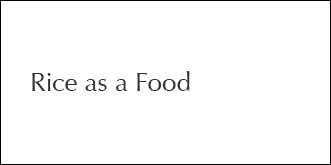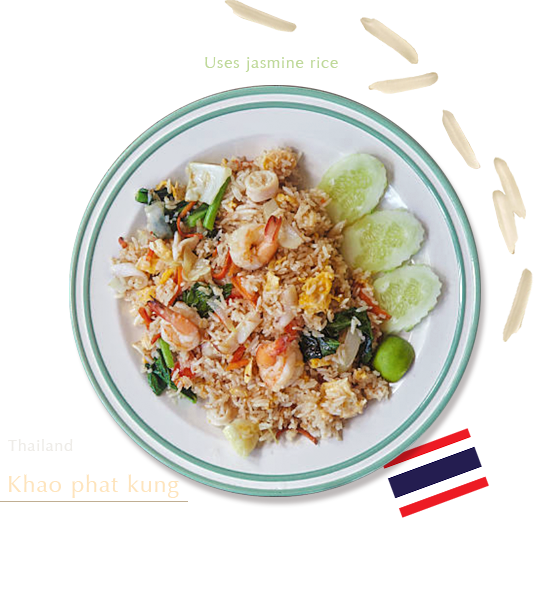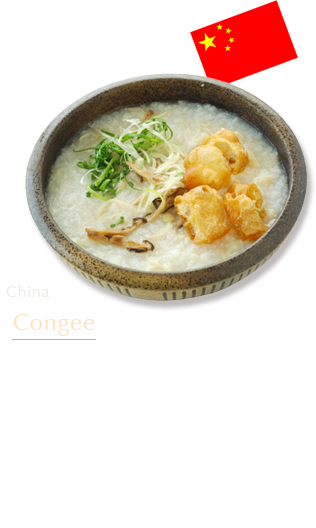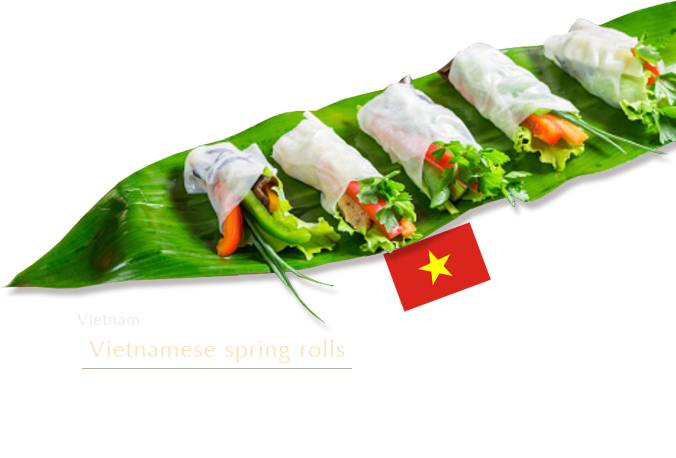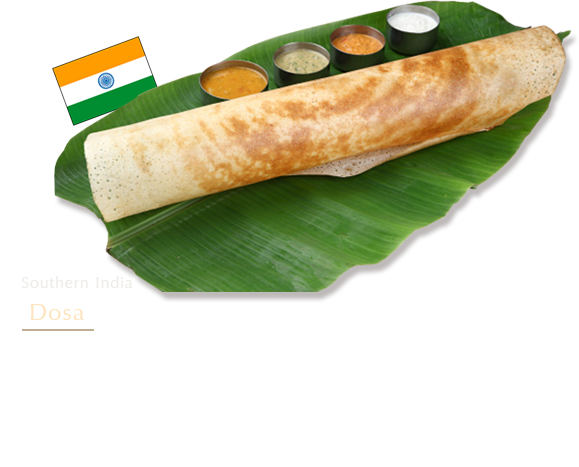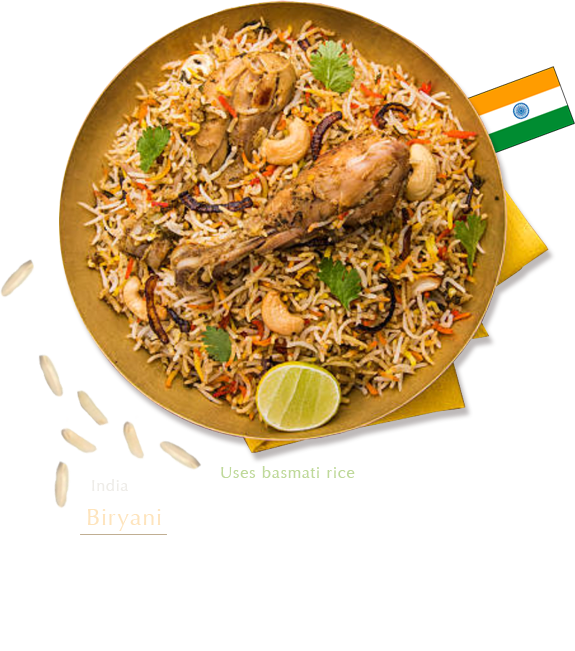Many varieties of rice cuisine exist in the world, with a wide range of methods of preparing the rice other than basic cooking, such as stewing the rice, frying it, steaming it, or making it into flour. Here are some representative types of rice cuisine, developed by people through a process of trial and error to better enjoy the rice they harvested from their land.
In modern Japan, we eat white rice. This perfectly white rice is the result of brown rice being treated with rice-polishing techniques. In ancient times, harvested rice was pounded with a mortar and pestle to simultaneously remove the hulls and polish the brown rice by removing the bran. Unpolished rice that does not have the brown bran layer removed cannot be cooked to be perfectly white. As our ancestors continued to grow rice, they selected plants that would produce white grains, and strove for techniques to make each grain even whiter.
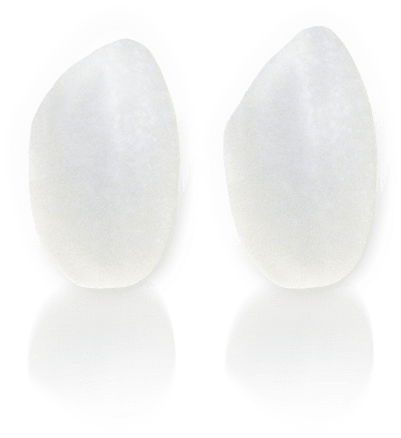
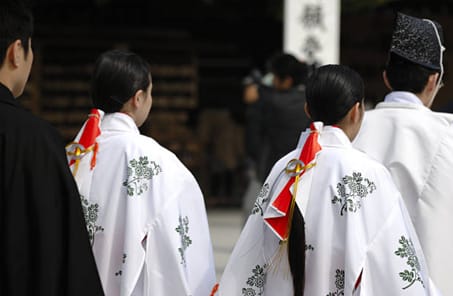
The color white is a symbol of purity and innocence. As the wearing of white garb by Shinto priests in shrines suggests, white has been seen as a special color free of impurities since ancient times, fit for the presence of kami. It is possible that people sought out whiter rice grains to offer in thanks to the kami for the yearly harvest as well.
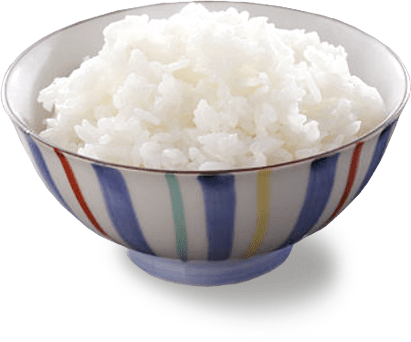
It is the use of white rice that makes gohan, plain cooked rice,
free of unfavorable tastes and enduringly delicious. In Japanese cuisine,
where the rice takes center stage, cooked white rice goes well with any side dish.
The common mental image of “eating rice” among Japanese people is likely to involve freshly-cooked rice served in a bowl. In Japan, rice is prepared with water alone, and cooked to preserve its natural white color and flavor. Teishoku is the style of eating this white rice as a main course with a combination of different side dishes, okazu. The blending of flavors of the rice and side dishes in one’s mouth lets the diner savor the synergistic effect created by the different combinations of rice and okazu. Ways of eating rice other than having it as a gain include mochi and rice flour, which is used to make items such as wagashi sweets.
Eating rice as a grain is the main way to eat rice in countries around the world, and adding flavorings to the rice is a common way to prepare it. People have developed ways to add fillings, flavors, aromas, and colors to rice to create delicious meals: Spanish paella cooks the rice together with fried seafood, Indian biryani steams boiled rice with spiced meat and vegetables, and risotto simmers the rice with milk or stock. In South-East Asia, there are areas such as Laos where people eat mainly glutinous rice, and enjoy steamed rice dishes that are similar to Japanese okowa. Rice flour is used in cooking to create rice paper and noodles.
According to a 2016 survey by the Ministry of Agriculture, Forestry and Fisheries (MAFF) on eating habits, approximately 20% of males in their twenties did not eat rice at all within a monthly period. One can infer from this that amid the diversification of food culture, there is an increasing number of people among the younger generations with a diet of foods such as simple breads and noodles. One can also see a trend of falling rice consumption in Japan as a whole. According to the MAFF, the annual per capita consumption of rice per Japanese citizen in 1962 was 118 kg, while in 2013, the figure was 57 kg. This means that the amount of rice eaten by Japanese people has fallen to roughly half of the amount that they ate 50 years ago.
Unlike Japan, however, other countries overseas are directing their attention toward rice cuisine. At the same time that washoku was designated by UNESCO as an Intangible Cultural Heritage in 2013, sushi consumption was booming around the world. The image that Japanese cuisine is healthy and low in calories is spreading, and more and more people are enjoying the rice that serves as the heart of washoku. Perhaps, having sprung from Japan to the world at large, washoku will go on to create new rice-eating cultures in all kinds of countries.








